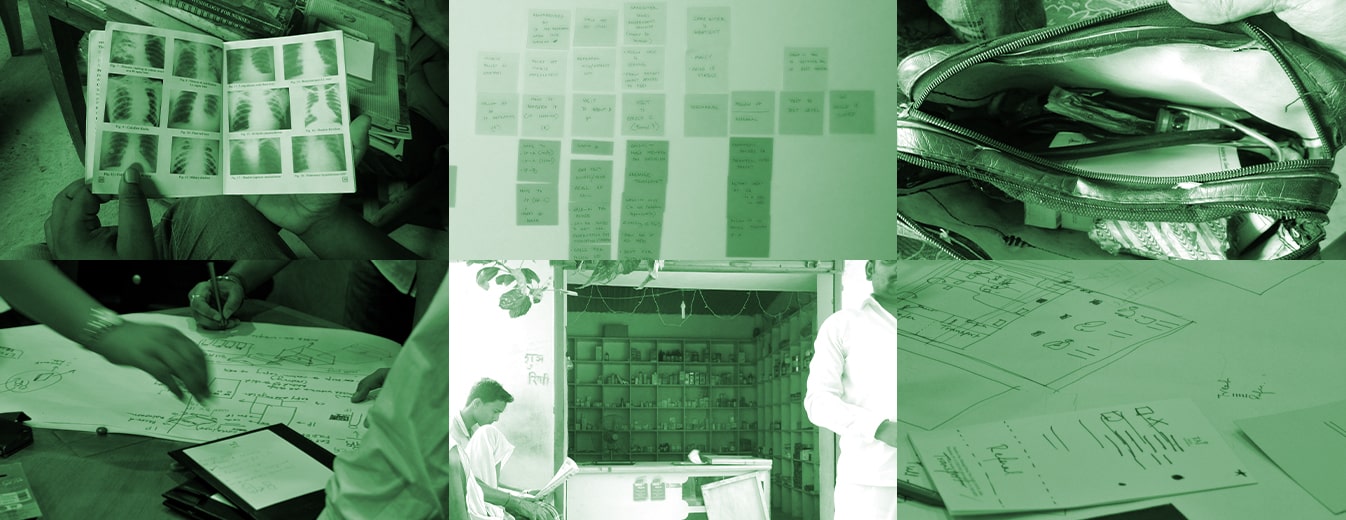Our Strategy
The Thinker Approach
The project began with a formative workshop that discussed ecosystem maps, patients, and healthcare provider journeys. This helped us identify specific areas of intervention, ultimately fueling the field research.
With the help of the empirical understanding of volunteers of Abt, we conducted a one-week deep ethnographic research of the two identified villages that included interviews with patients and healthcare providers.
This was followed by a stakeholder ideation workshop which helped us align on a design direction.
Insights We Drew/ Insights Inferred
Being a part of rural areas among the underprivileged and vernacular audiences for a stipulated amount of time proved to be challenging but allowed us the insight required to develop the product innate to the needs of the target group.

Key Strategic Interventions
Seamless Communication
Visual content delivery implemented to facilitate a seamless transfer of critical medical information between healthcare professionals and affected families.
Functional Design
Designed to be handy and compact to improve the tool’s serviceability on the field.
KEY FEATURES
01
Non-Digital Tool
Catering to a rural area around Bihar, the aid developed was specifically designed to be a non-digital healthcare tool.
02
Efficient Design
Designed to work as a communication tool, it helps healthcare providers identify severe cases to make timely referrals to doctors, at any given time.
03
Economical and Scalable Solution
The vendor system was integrated during the process of design to develop the most cost-effective tool that works.

DESIGN ACTIVITIES
Formative
workshop
Field research
Ideation
workshop
Concept-Test-Iterate
cycles
User testing
Production design
and coordination
Outcomes and Impacts
Abt Associate launched the intervention in 2016. The tool received a 20% adoption in the initial launch which has been increasing with time.
It received India’s Best Design Project and A Design Award in 2017.
AWARDS

A Design Award 2017




